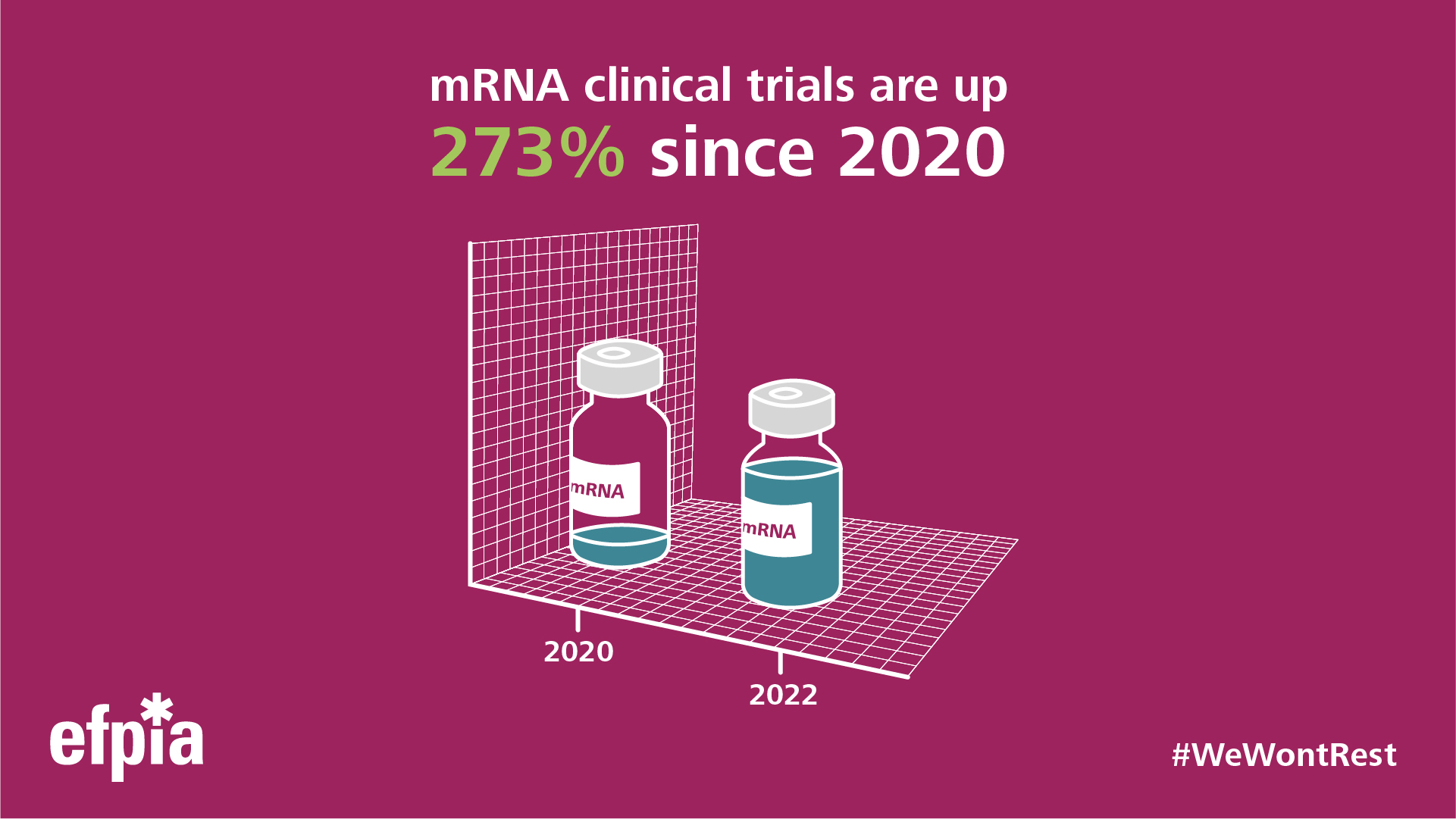Pushing the boundaries of science for the benefit of patients
EFPIA's 2022 Pipeline Report
Behind the data and key facts contained in the report is a story of hope. Hope for patients, their families, and their healthcare providers. The data also offers insights of new opportunities to increase the sustainability of national healthcare systems and drive economic growth.
This year’s report highlights promising developments for people living with cancer. Following revolutionary CAR-T therapies that are transforming the treatment of blood cancers by making it possible for the body to fight back, the report includes another highly promising class of cancer immunotherapy called BiTEs (Bispecific T-cell Engager).
Many of us know someone with Multiple Sclerosis (MS) and know how devastating it can be. It is caused by demyelination damage to the protective covering of nerve fibres by the immune systems. New remyelinating treatments currently being tested have the potential to slow down, prevent or even reverse the damage caused by MS. They could help MS patients to move better, see better and improve cognition. Patients would become less dependent on family carers – currently 70% of MS patients depend on the help of family members. And by improving physical condition of MS patients, remyelinating therapies will reduce their need for social services, thus bringing savings to healthcare systems.

The intense R&D activity of the industry described in the report is welcome news for patients. With 8000 medicines in development, the question is not if medical innovation will happen but where. From a European perspective the picture is mixed. The region is falling behind others when it comes to research and development of new therapies – and fast.
Despite the number of CAR-T clinical trials increasing by 185% between 2020 and 2022, more than 80% of these trials are conducted outside Europe. For patients in Europe, this means a missed opportunity to receive early access to a treatment that could offer new hope for treating their disease.

For example, in the US, in 2021 VC funding pumped $16 billion into gene therapies, new treatments that replace defective or missing genes with the aim of curing life-long and highly debilitating rare diseases. In the EU, VCs invested just $3 billion.
What matters now are rules and policies that encourage investment, such as a robust and predictable intellectual property rights ecosystem and a cutting-edge regulatory framework. If we are not able to put these in place in Europe, the gap between us and the rest of the world will continue to widen and Europe will squander its opportunity to become a leader in health and life-sciences.
Of course, innovation only matters if it reaches patients. After years of research and development, companies want their medicines to help people as quickly as possible. The report identifies areas where industry can work with other stakeholders to speed up the journey of new therapies and vaccines to patients. For a start, regulators need to adapt regulatory processes to better suit the kinds of therapies coming down the track. Moreover, today’s approaches to Health Technology Assessments, pricing and payment may be ill-suited for tomorrow’s therapies. New approaches to funding truly innovative treatments will be essential to their use, as will robust systems to capture the data that can prove how effective treatments are in real life.
A few months ago, EFPIA published a range of proposals and took effective action to accelerate access to medicines. Solutions such as an Equity-Based Tiered Pricing that align pricing with countries economic ability to pay would make for a fairer system reducing the disparities in access to medicines that we see across Europe. Action-wise, our members committed to file for pricing and reimbursement in all 27 member states within two years of receiving marketing authorisation and to track that filing so as to identify any bottlenecks to access and address them with relevant stakeholders. Modelling by IQVIA predicts that the industry’s commitment to file should increase the availability of medicines from 18% up to 64% in several countries and critically, reduce the time patients wait for new medicines by 4 to 5 months in countries such as Bulgaria (-179 days), Poland (-129 days) and Romania (-155 days).
The impact of pharmaceutical innovation is profound and tangible. Backing innovation and boosting access across Europe will make for healthier people, society and economies. Catching up with the rest of the world is not impossible, but it does mean ensuring that we chose the right policy option to address the right issues. In the context of the ongoing review of the EU Pharmaceutical Legislation, it means ensuring we retain the key drivers of innovation – intellectual property protection and a world-class regulatory framework, then work together with Member States to address access issues. The decisions we make today will define the future of innovation in Europe for decades to come. I hope that the facts and figures as well as the fantastic scientific breakthroughs presented in the Pipeline report will help drive decision makers to the right action.
